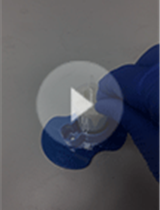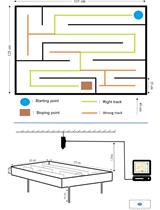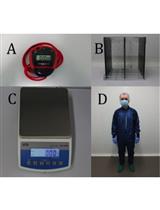- EN - English
- CN - 中文
Creating a Rat Model of Chronic Variate Stress
大鼠慢性多种可变应激模型创建
发布: 2014年12月05日第4卷第23期 DOI: 10.21769/BioProtoc.1315 浏览次数: 11819
评审: Soyun KimEmmanuelle BerretAnonymous reviewer(s)
Abstract
Stress is a condition of human experience and an important factor in the onset of various diseases. There are numerous studies showing how stress can accelerate cell aging, immune senescence and some age-related diseases such as neurodegenerative disorders and osteoporosis. However, the effects of stress have different consequences depending on the type, duration or severity and predictability of the stressor applied. Although stress can be beneficial in its acute phase, repeated and severe stressful stimuli produce adverse effects. There are different models of stress depending on the exposure time; acute (when the stressor is applied for a short time, e.g. hours or days, and intensely) or chronic (when the stressor is applied for a long time, e.g. weeks or months, and less intensely. In these cases, the stressor can be repeated each time or different stressors can be used). The latter model is most frequently used to achieve similar conditions to those found in human diseases related to stress. Also, there are several different paradigms depending on the purpose of the study [development of drug therapies or modeling depressive behaviors; for the different paradigms see Dagnino-Subiabre, (2012)]. Here, we describe a 9-day variable-stressor paradigm with repeated and prolonged stimulation and a random daily stressor over days or weeks to minimize its predictability. This protocol has been adapted from other models of variable stress with significant modifications. The absence of predictability of the stressor applied is an important characteristic of this model compared to other models in which repeated stress is used. We avoid the use of a strong stressor, such as foot shock or tail pinch, and describe an easily reproducible new chronic mild stress model. Some models of chronic mild stress have been reported to lead to a wide range of behavioral disturbances and have been proposed as models of depression in animal studies (Cryan et al., 2005).
Keywords: Stress (强调)Materials and Reagents
- Male albino Wistar rats (250-270 g)
Equipment
- Glass tank (44 x 33 x 30 cm)
- Plastic tube (21 x 6 cm, 6 cm diameter)
- Individual cages (47 x 32 x 20 cm)
- Cold room or refrigerator (4 °C)
Procedure
文章信息
版权信息
© 2014 The Authors; exclusive licensee Bio-protocol LLC.
如何引用
de Pablos, R. M., Sarmiento, M. and Espinosa-Oliva, A. M. (2014). Creating a Rat Model of Chronic Variate Stress. Bio-protocol 4(23): e1315. DOI: 10.21769/BioProtoc.1315.
分类
神经科学 > 行为神经科学 > 实验动物模型 > 大鼠
神经科学 > 神经系统疾病 > 动物模型
您对这篇实验方法有问题吗?
在此处发布您的问题,我们将邀请本文作者来回答。同时,我们会将您的问题发布到Bio-protocol Exchange,以便寻求社区成员的帮助。
Share
Bluesky
X
Copy link













